Stephen Hayes's Blog, page 53
August 4, 2014
Tuesday 4 August 1914
 Tuesday 4 August 1914 by Ian Ribbons
Tuesday 4 August 1914 by Ian Ribbons
My rating: 5 of 5 stars
I’ve been reading this book to mark the centenary of the beginning of the First World War.
The war could be said to have started a week earlier, on 28 July 1914, with the Austria-Hungarian Empire’s declaration of war on Serbia. Hostilities actually commenced on 29 July, with the Austrian shelling of Belgrade, but it was only on 4 August that German troops crossed the Belgian frontier, and only on 12 August that Austria actually invaded Serbia. German troops invaded neutral Luxembourg on 1 August, but the Luxembourg army did not resist, and German occupation was accepted under protest, but without fighting.
So 4 August 1914 was the day that rhetoric became reality, the start of the war that would be fought all over the world, and would last four years.
So this book, illustrated by the author, is a dramatic hour-by-hour account of the events of that day — diplomatic, military and civilian.
The book was first published in 1970, a little over 50 years from the end of the war, and thus shortly after many of the restricted archival documents dealing with the war were released for public viewing. Thus the author can reveal not only Germany’s public stand for peace and moderation with the deterioration of Austrian-Serbian relations following the assassination of the Archduke, but also that Germany secretly encouraged Austria to attack Serbia, in the belief that it would be a quick local war. When Russia began mobilising in support of Serbia, the Germans began to get cold feet, and urged restraint on Austria, but having been told that such peaceful utterances were for public consumption only, and were to be ignored, Austria went ahead anyway. German miliary planning required that France, Russia’s ally, be attacked first, and the pathway to France lay through neutral Belgium, and so the fighting began, and brought Britain into the war. Many declarations of war preceded and followed this day, but this was the day on which serious fighting began.
Ian Ribbons bases his chronology on Greenwich mean time, so that one can see events that were happening almost simultaneously in widely separated places, and that only adds to the drama of the day. It would be a good read at any time, but on this day it is especially poignant.
So much for the book itself, but there are more thoughts on this day than can be sparked off by a single book, and more thoughts sparked off by that book than can be encompassed by a single review. Ribbons starts his story with the observation that “five times within eight years a crisis has pushed the Great Powers of Europe to the brink of war.”
Probably no one now alive remembers much of it. A few years ago the last people who fought in it died, and and anyone still alive now who was born before it ended would have been an infant, and would not have remembered much.
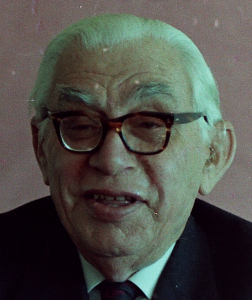
Prof Edgar Brookes, historian
Fifty years ago, when I was a student, I attended a lecture by Professor Edgar Brookes, emeritus professor of history at the University of Natal in Pietermaritzburg. It was a public lecture to mark the commemoration of the 50th anniversary of the start of the First World War, and the 25th anniversary of the start of the second. He recounted some of his own experiences in the war; back then it was still within living memory.
Now there are still people around who knew people who had been through it, but soon they will be gone too. So I recall stories that people told me at second or third hand.
About the same time my mother told me about her uncle in Scotland, Tom Hannan, was jailed as a conscientious objector during WWI. Being a pacifist, I was eager to know more about this heroic kinsman, who I pictured being confronted by angry ladies wanting to show him a white feather. My mother laughed, and said that he wasn’t a pacifist, he was a socialist, and refused to fight because it was an imperialist war. A couple of years after that met his son, Willie Hannan, then Labout MP for Maryhill in Glasgow, my mother’s cousin. I asked him about his father, and he said yes, he remembered them coming to arrest his father, who was a respectable man, and hadn’t done anything wrong. I got the impression that cousin Willie was embarrassed by the whole thing, and thought the less said about it the better. Tom Hannan’s brother, Stanley Livingston Hannan, however, was a Captain in the Royal Artillery, and was killed at Cambrai in 1917.
So our second and third hand memories will gradually coalesce into a vague picture and then disappear into the past as a story told only in history books. But some things remain:
The sun that bids us live is waking
Behind the cloud that bids us die
And in the murk fresh minds are making
New plans to blow us all sky-high.[1]
As one bishop puts it:
The one hundred years since the beginning of the First World War is unlikely to prompt an ardent international response. Some places will build monuments to the heroes, others will clean up the memorial cemeteries, and festivities will be held elsewhere. But will the war anniversary become a reason for rethinking its outcomes on the global scale? Will the outcomes of the two world wars be a lesson to global leaders on whom it depends whether the third one will begin (Metropolitan Hilarion of Volokolamsk).
____
Notes
[1] from Quake, Quake, Quake: a leaden treasury of English verse by Paul Dehn.


July 20, 2014
The Gadarene rush to war
As we approach the centenary of the beginning of the First World War, and the 75th anniversary of the beginning of the Second, politicians are using the same sabre-rattling rhetoric as was used by politicians back then. I Googled for “MH17″ five minutes ago, and what did I get?
MH17 plane crash: Kerry points finger at Russia
Malaysia Airlines Flight MH17: What we know today
Cameron tells Putin shooting down of MH17 was …
Two of the first three hits focus on the utterances of belligerent war-mongering politicians.
As for Putin, he points a finger at Poroshenko, and says if he sought a peaceful solution to the Ukraine conflict, the downing of the flight MH17 would not have happened. If one compares the recent rhetoric, Putin’s is actually the least belligerent and most peaceful. He calls for peace in Ukraine, and for an independent investigation of the airliner crash. His accusation of Poroshenko is indirect, for allowing the conflict to develop and spread.
A different, and, in my view more sensible comment on this comes from Peter Hitchens: Mourn the victims… but don’t turn one tragedy into a global catastrophe | Mail Online:
One thing we should have learned in the past 100 years is that war is hell. We might also have noticed that, once begun, war is hard to stop and often takes shocking turns.
So those who began the current war in Ukraine – the direct cause of the frightful murder of so many innocents on Flight MH17 on Thursday – really have no excuse.
There is no doubt about who they were. In any war, the aggressor is the one who makes the first move into neutral or disputed territory.
And that aggressor was the European Union, which rivals China as the world’s most expansionist power, swallowing countries the way performing seals swallow fish (16 gulped down since 1995).
Ignoring repeated and increasingly urgent warnings from Moscow, the EU – backed by the USA – sought to bring Ukraine into its orbit. It did so through violence and illegality, an armed mob and the overthrow of an elected president.
I warned then that this would lead to terrible conflict. I wrote in March: ‘Having raised hopes that we cannot fulfil, we have awakened the ancient passions of this cruel part of the world – and who knows where our vainglorious folly will now lead?’
Now we see. Largely unreported over the past few months, a filthy little war has been under way in Eastern Ukraine.
Many innocents have died, unnoticed in the West. Neither side has anything to boast of – last Tuesday 11 innocent civilians died in an airstrike on a block of flats in the town of Snizhne, which Ukraine is unconvincingly trying to blame on Russia. So PLEASE do not be propagandised by Thursday’s horrible slaughter into forgetting what is really going on.
Powerful weapons make it all too easy for people to do stupid, frightful things. Wars make such things hugely more likely to happen.
In September 1983, the Soviet air force, inflamed by Cold War passions and fears, inexcusably massacred 269 people aboard a Korean Airlines 747.
In July 1988, highly trained US Navy experts aboard the cruiser Vincennes, using ultra-modern equipment, moronically mistook an Iranian Airbus, Iran Air Flight 655, for an F-14 Tomcat warplane. They shot the airliner out of the sky, killing 290 innocent people, including 66 children.
All kinds of official untruths were told at the time to excuse this. In October 2001, bungling Ukrainian servicemen on exercise were the main suspects for the destruction of Siberia Airlines Flight 1812 over the Black Sea. Whoever did it, they killed 78 passengers and crew en route from Israel to Novosibirsk – though Ukraine has never officially admitted guilt.
Complex quarrels about blame for such horrors are often never resolved. I am among many who do not believe that Libya had anything to do with the mass murder of those aboard Pan Am 103 over Lockerbie in December 1988, very likely an Iranian-backed retaliation for the Airbus tragedy. All the evidence points to a terror group operating from Syrian-controlled territory, and none points to Libya.
But at the time of the prosecution, we were trying to make friends with Syria, which has since gone back near the top of our enemies list but may soon be our ally again, against the fanatics of Isis. Confused? You should be.
So, let us just mourn the dead and comfort the bereaved, and regret human folly and the wickedness of war. Let us not allow this miserable event to be fanned into a new war. That is what we did almost 100 years ago, and it is about time we learned something from that.
I don’t usually regard the UK Daily Mail as a reliable source, and in this case Peter Hitchens follows this article with a lot of twaddle that undermines his own credibility, but in this affair nobody has much credibility. In the remainder of his article, Hitchens is clearly looking for any excuse to bash the EU, just as Kerry, Cameron & Co are looking for any excuse to bash Putin.
What we see is what Orwell predicted in his novel 1984, where the propaganda of politicians about perceived enemies is echoed by the media, and everyone is expected to believe it.
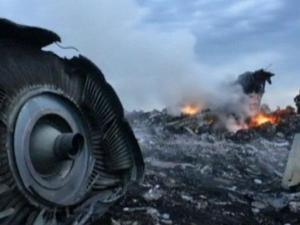 Barely three years ago the UN Security Council, at the urging of Western governments, imposed a “no-fly zone” over Libya, to stop Gaddafi from “bombing his own people”. If this was their honest concern, honestly expressed, should they not be imposing a similar “no-fly” zone over Ukraine, to stop Poroshenko from bombing “is own people”? And should the UN Security Council not be imposing a no-fly zone over Gaza?
Barely three years ago the UN Security Council, at the urging of Western governments, imposed a “no-fly zone” over Libya, to stop Gaddafi from “bombing his own people”. If this was their honest concern, honestly expressed, should they not be imposing a similar “no-fly” zone over Ukraine, to stop Poroshenko from bombing “is own people”? And should the UN Security Council not be imposing a no-fly zone over Gaza?
But, we are told by the Western media, “separatists” are good when Western leaders approve of them (as in the case of Croatia and Slovenia in 1990, and Kosovo in 1999), but bad when Western leaders do not approve of them (as in the case of South Ossetia a few years ago, and of the eastern Ukraine now). Whether they support separatists or don’t support them, however, they always blame someone else for the resulting violence, and in doing so they make people like Putin, with his calls for peaceful solutions and independent investigations, look good.
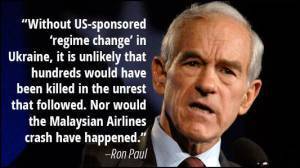 There was, however, at least one Western politician who attributed the disaster to the same causes that Putin did. Ron Paul is a bit of a maverick, rather on the periphery of his own party, but I believe his analysis of the situation comes a lot closer to the truth than the disingenuous bluster of Cameron and Kerry.
There was, however, at least one Western politician who attributed the disaster to the same causes that Putin did. Ron Paul is a bit of a maverick, rather on the periphery of his own party, but I believe his analysis of the situation comes a lot closer to the truth than the disingenuous bluster of Cameron and Kerry.
The time to point a finger at Putin, and to blame him, will be if it is ever discovered who actually shot down the Malaysian airliner, and who was responsible for giving the order that shot it down. If Putin then gives a medal to those responsible, as the US Goverrnment gave a medal to Captain Harris of the Vincennes for shooting down an airliner, then will be the time to point a finger at Putin, and tell him that it is “unacceptable”. As it is, Cameron and Kerry are as much to blame as Putin, is not more so, because they have consistently fanned the flames of the conflict and have done nothing to try to extinguish them.
Until such time as that happens, let everyone involved see the conflict as “unacceptable” and do their best to reduce and mitigate it, rather than fanning the flames, as the belligerent rhetoric of many politicians is doing at the moment.


July 8, 2014
The right to be forgotten
There has been increasing discussion of “the right to be forgotten” in various quarters, though you will not find it in the Universal Declaration of Human Rights. I’m not sure where the phrase originated, but it seems to be spreading quite rapidly, and just to make sure we don’t forget it, we were reminded of it in a recent article in the Mail & Guardian, Google and the right to be forgotten:
On May 13, the Court of Justice of the European Union (ECJ), the highest court in the EU, ruled in favour of Costeja González and against Google. González asked the search engine giant to remove some unflattering links from the results that appeared when anyone searched for his name. Google refused, and so he took the company to court.
We can all sympathise with González. When his home was repossessed in 1998, a notice appeared in a local paper and on its website. Most people would want to forget such an unpleasant and embarrassing event as soon as possible. But Google’s results continued to remind the world of the repossession more than a decade later.
With its ruling, the ECJ effectively created a new legal right – the right to be forgotten. Since the ruling, tens of thousands of requests for removals have been pouring into the system that Google built for their handling. But the current solution is both deeply problematic and impractical.
Regardless of the merits of the Google case referred to, I think the term “the right to be forgotten” is a singularly unfortunate one, because if such a right really existed, it would be the right to end all rights. If taken literally, it could mean the end of all history.
In the Orthodox Church, when someone dies, we say “May his memory be eternal.” It is part of our humanity to remember people. There is no such thing as a “right” to be forgotten, and if people want to invent such a right, will they develop a device to wipe the memories of all those who might remember them? If so, tampering with other people’s memories would be the biggest violation of human rights of all. And saying that people have a “right” to be forgotten implies that they therefore have a right to tamper with other people’s memories.
I find it hard to believe that the European Court of Human Rights intended to create such a right in the Conzalez case or any other. Whatever right they may have created, I don’t think it was the right to be forgotten.
But perhaps this is just wishful thinking on my part, because according to no less an authority than The Stanford Law Review that is precisely what they did intend to create: The Right to Be Forgotten – Stanford Law Review:
…the European Commissioner for Justice, Fundamental Rights, and Citizenship, Viviane Reding, announced the European Commission’s proposal to create a sweeping new privacy right—the “right to be forgotten.” The right, which has been hotly debated in Europe for the past few years, has finally been codified as part of a broad new proposed data protection regulation.
If we are to take that at face value, and there is nothing to suggest that Viviane Reding did not intend us to take it at face value, then if someone would not or could not forget someone who wanted to be forgotten, the European Court of Human Rights could order them to have a lobotomy or other brain surgery until the memory was excised, because that is what the phrase “the right to be forgotten” implies. If that is not what Viviane Reding or the European Human Rights Commission intended, then they should not use that phrase. Perhaps they should cloak it in a more vague and comforting form of words like “final solution”.
There are, for example, people who say that we should forget how bad apartheid was, and move on. Should the history of that period be excised from the history books because some people, especially those who connived at it, prefer to forget it?
When I read about the Gonzales case, I can sympathise, and say yes, there is a problem. But the problem is not one that can be solved by creating a spurious right that will erase history from public memory. And I doubt very much that Gonzales really wants to be forgotten. Does he want to be buried in an unmarked grave, where the grave-diggers are killed immediately afterwards to prevent them from ever disclosing its location? Because that is what the term “the right to be forgotten” implies.
No, I am sure that what Gonzalez wants is not to be forgotten, but not to have his face perpetually rubbed in one incident from his past as if that was the most significant thing about him. I think that that is a not unreasonable desire, but it is not “the right to be forgotten”. If that is the kind of problem that the European Commission for Human Rights is hoping to solve, then creating a “right to be forgotten” is using a proverbial steamroller to crack a walnut.
The right to be forgotten is thoroughly evil, and the sooner we forget about it, the better.


June 27, 2014
The book of air and shadows
 The Book Of Air And Shadows by Michael Gruber
The Book Of Air And Shadows by Michael Gruber
This isn’t a review, because I’ve only read the first forty pages of this book, and I’m not sure whether I’ll finish it. It’s a library book, so it’ll be no great loss, it’s not as though I’d paid for it or anything.
What makes one pick out a library book?
I saw the title and the author’s name on the spine, and pulled it out and read the blurb. It sounded interesting, a literary mystery, a lost play of Shakespeare that comes to light, professors of English literature fearing for their lives. It sounded a bit like The Historian by Elizabeth Kostova, which I enjoyed.
And then there’s the author’s name, Gruber. I knew a professor of English literature called Gruber. So that recalled my days as an undergraduate, 50 years ago. Actually his real name wasn’t Gruber. His colleagues just called him that behind his back, as a joke. He was Professor W. Gardner, the head of the English Department at the University of Natal in Pietermaritzburg. His colleagues built up an elaborate mythology about Gruber, and how when he talked he emitted a gas called grubane, and so on.
I have very few memories of Professor Gardner Senior (his son Colin succeeded him as head of the English Department, and I got to know him much better). Gruber lectured us on the development of the English language, and the one thing I remember from his lectures is that he said the said that the Yorkshire expression “By gum!” came from the old English word for a man, gumum.
The other memory is second hand, from a brilliant student, Ritchie Ovendale, who did English and History Honours simultaneously. He mentioned to Professor Gardner that he had been reading James Joyce, and was advised not to, because “it will blunt your critical faculties”. Ritchie Ovendale spotted a copy of Ulysses on his desk, and we wondered whether he had confiscated it from a student. At that time the English Department adhered closely to the dictates of F.R. Leavis, and Joyce was not a canonical author.
But, like one of the characters in The Book of Air and Shadows, I digress like TRistram Shandy, and the point of this is that I found the author’s name as intriguing as the title and the blurb.
The first few pages of The Book of Air and Shadows have the rambling reflections of the protagonist (one presumes), an intellectual property lawyer whose father was accountant to The Mob. Any mention of The Mob is guaranteed to put me off. I quite enjoy reading crime novels, with the exception of ones about organised crime, and especially American organised crime. And the style of writing fits that milieu, and here am I thinking that I really don’t want to read another 500 pages of this.
Then the scene changes, a couple of different characters appear, and the style changes too, with a third person viewpoint. So maybe it’s just one character who puts me off, and I’ll read on a bit more and see how it goes.


June 24, 2014
Where have all the Christian bloggers gone?
Where have all the Christian bloggers gone?
Gone to Facebook or Patheos, or given up blogging altogether?
About six years ago a group of Christian bloggers (and one atheist) got together for coffee in a cafe in Hatfield, Pretoria, and spent a couple of hours chatting. Some had met before, because they were at university together, but others had only known of each other because they read each other’s blogs. It was an interesting gathering, but I wonder if it would be possibe to do such thing today, not necessarily with the same people, but with anyone.
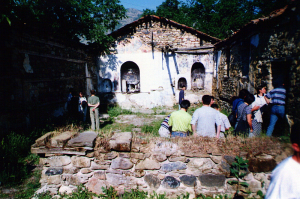
Is the state of Christian blogging a bit like this ruined church in an Albanian village?
Some of their blogs are still in my blogroll, but nothing has been posted in them for a year or more. I often even forget to look.
That was also the time that the print media were trying to carve a niche for themselves in the blogosphere. The Mail & Guardian invited some active bloggers to blog in their Thought Leader section. That, it seemed to me, was a betrayal of the spirit of blogging. It was bloggers allowing themselves to be coopted by the mainstream media.
Something similar happened with Patheos, which was a kind of vacuum-cleaner site that sucked in several Christian blogs that I used to read. I rarely read them now, because of my aversion to the very concept of Patheos. It describes itself as “hosting the conversation on faith”, which seems to confuse means and ends, as if “faith” were something separate from life itself. Faith is surely a conversation about life, and not an end in itself. Hosting a conversation on faith seems to be removing religion from the publicx square, and isolating it in a kind of religious homeland. My blogging friend Macrina Walker has written about religion in the public square here.
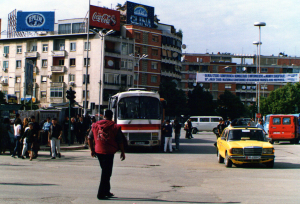
The public square in Tirana, Albania, where religion was forbidden for 27 years.
When another Christian blogger, Ryan Peter (whom I haven’t managed to meet face to face yet), proposed setting up something called The Christian Blooger I was a little wary, fearing that it was yet another attempt at setting up a vacuum-cleaner site like Patheos or Thought Leader. But his proposal for The Christian Blogger shows that he is aware of the dangers, and is trying to avoid them.
Ryan Peter used to participate in a similar venture in the past, a kind of “blog of blogs” called Emerging Africa, which sadly is no more. It was run by Roger Saner, another blogger who seems to have disappeared from the scene, and whose blog hasn’t been updated in years. So could The Christian Blogger lead to a revival of Christian blogging in South or zouthern Africa? I hope so.


The end of the hipster: how flat caps and beards stopped being so cool | Fashion | The Observer
I’ve commented before on how the meaning of words like hipster and cool have changed, and here’s an article that makes a similar point.
At some point in the last few years, the hipster changed. Or at least its definition did. What was once an umbrella term for a counter-culture tribe of young creative types in mostly New York’s Williamsburg and London’s Hackney morphed into a pejorative term for people who looked, lived and acted a certain way. The Urban Dictionary defines hipsters as “a subculture of men and women, typically in their 20s and 30s, that value independent thinking, counter-culture, progressive politics”. In reality, the word is now tantamount to an insult. via The end of the hipster: how flat caps and beards stopped being so cool | Fashion | The Observer.
What is rather surprising is that it’s on the fashion pages. And the original meaning of “cool”, which to many people now means something like “fashionable” originally, in the metaphorical non-temperature sense, meant something like the opposite. To be cool meant to be detached and unmoved by the vagaries of fashion. It meant to “do your own thing” regardless of what the fashion pundits said. To be cool meant neither to follow fashion, nor to revolt against it by being deliberately unfashionable. It meant to be unmoved by it.

Is this a a plastic hippie, or an American right-wing conception of a real one? How would you know?
The article makes the distinction between what used to be called “hippies” and “plastic hippies”, and the popular conception of a “hipster” today seems to be based on the old idea of the plastic hippie, someone who is making a fashion statement. But things nowadays have got so confused that you can’t tell who is satirising whom. Try this, for example: Rightbloggers Go Peacenik on Syria; Prefer War with Iran, Obama | Village Voice: “Here’s a lovely historical irony: A Democratic president has proposed limited military action in the Middle East, and conservative Republicans are aligning with anti-war Democrats, Occupy Wall Street, The Nation, MoveOn, and Code Pink to stop him.”
It’s true, too. As my blogging friend Terry Cowan has noted, some of the best comments on American militarism and imperialism are coming from The American Conservative. Who would have thought of American conservatives as hippie peaceniks? The times they are a-changin’!
If I go on any more, I’ll just be repeating what I said in my other articles, Hipster Christianity and Hipster Christianity redux, so I’ll leave it at that for now.


June 9, 2014
Pentecost at Gerardville
On the Monday of Pentecost Archbishop Damaskinos of Johannesburg and Pretoria visited the Monastery of the Descent of the Holy Spirit at Gerardville, on the western edge of the City of Tshwane, in Gauteng province, South Africa. Since the death of Father Nazarius (Pribojan) in 2008 there have been no monks living there permanently. Archbishop Damaskinos had not visited before, but came to see, and to discuss Fr Elias Palmos’s plans to revive the monastery and develop the site (of 25 hectares) as a mission centre.

The clergy with Archbishop Damaskinos after the Divine Liturgy in St Demetrius Church. Deacon Stephen Hayes, Fr Elias Palmos, Archbishop Damaskinos, Fr George Cocotos, Archimandrite Athanasius Akunda
Fr Elias inherited some money from his father, and set up a trust to buy the land to be used for the church, and the Holy Community of New Sion to administer the centre on behalf of the church, with provision for the revival of the monastery, and future plans for a theological school, a mission centre, and a parish of the Archdiocese, using St Demetrius Church, the biggest church on the site.

The congregation at St Demetrius on Pentecost Monday, 2014, with Archbishop Damaskinos
The Feast of the Descent of the Holy Spirit seems an appropriate occasion to pray for the Holy Spirit to breathe new life into the place and those who are living there now, and will, we hope, with the blessing of Archbishop Damaskinos, do so in future.
The monastery site is on a portion of the farm Vlakplaas, and in the past another part of the farm was used as a place of torture and murder. We hope that the prayers of the people here will cleanse the land of its ugly past.

Archbishop Damaskinos has a tour of the monastery site.
There is enough land at the site for many different kinds of activities without disturbing the peace of the monastery. Some of the celibate clergy are hoping to live there soon, to restart the monastic life, and help develop the centre. There is room for several different expressions of monastic life, including male and female monasteries, but for the immediate future we hope there will be enough people to reestablish the monastic life in one community.
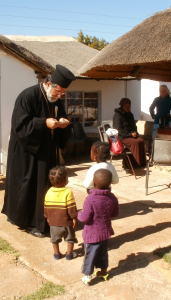
Archbishop Damaskinos giving ikon cards to some of the children who were at the service
The parish of St Demetrius has been in existence for some time, and serves those those live to the south and west pf Pretoria, including those at the children’s home in Atteridgeville. Eventually it is hoped to build a church in Atteridgeville too, and indeed the foundations have been laid, but in the mean time the congregation in Atteridgeville has readers services, and are brought to St Demetrius by taxi for the Divine Liturgy.
With the possibility of more priests living at the monastery, it will also be possible to have more regular services at the parish church of St Demetrius.
It is also hoped, with the blessing of Archbishop Damaskinos, to have youth gatherings, to bring together young peoiple from different parishes, and have some teaching on the Orthodox Christiasn faith. It wouold also be a place for people of all ages from different parishes to come together, and Archbishop Damaskinos spoke of the possibility of holding such a celebration later this year.
When the Most High came down and confused the tongues
He divided the nations
but when He distributed the tongues of fire
He called all to unity
therefore with one voice we glorify the all-holy Spirit
(Kontakion for Pentecost)
The Monastery of the Descent of the Holy Spirit is a place for people of all nations, and it was fitting that on the feast of the Descnet of the Holy Spirit people of several different nationas and languages gathered.

St Demetrius Church, the biggest church at the monastery
Please pray for the Archbishop and the Archdiocese of Johannesburg and Pretoria, and for the Holy Community of New Sion, that through their efforts, guided by the Holy Spirit, Orthodox monasticism may be established in southern Africa.


June 5, 2014
Memoir of St Martin’s Anglican Church, Durban North
For three years I served as an assistant priest at St Martin-in-the-Fields Anglican Church, Durban North — from 1973-1976. I posted a few photos from that time on Facebook, and the parish archivist, Theunis Eloff, asked if I would make some of them available to the parish archives.
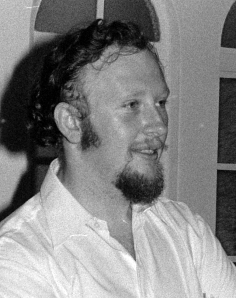
Theunis Eloff, the parish archivist at St Martin’s
I thought about it, and thought I could perhaps go one better, and offered to give him some annotated extracts from my diary for that period. In a sense it was easy, because a few years ago I had transcribed most of my hard copy diaries into a computer database, so I wouldn’t have to type the text, just get the computer to spit out the relevant entries and type a few bits of connecting text.
But annotations and indexing proved to be a bit more complex. After all, it was forty years ago. While I was there, the then Anglican bishop- of Natal, Vernon Inman, retired. He loomed very large in my life, and I think in the lives of many other Anglicans in Natal. After all, he had been Bishop of Natal forever. If, at his retirement service, I had tried to think back forty years, I couldn’t. I wasn’t even born then. Now no one under 50 will have even a vague memory of Vernon Inman. And so, I thought, with many of the other people mentioned. No matter how well known they were at the time, few people will remember them now, so their appearance has to be explained.
There were several significant developments in the parish during the three years I was there. Here are the ones that stand out for me.
1. Integration of English and Zulu-speaking congregations
When I went to St Martin’s it was divided. There were two parishes using the same building. The English-speaking congregations belonged to St Martin’s, the Zulu-speaking congregation were an “outstation” of St Faith’s in central Durban. This arrangement had been decreed by the diocesan synod in 1964. After tossing it back and forth between the official “challenge groups” (set up to “challenge instances of racism in the church”) with to no avail, the parish challenge group took it up as a lay initiative, and the Zulu-speaking members individually resigned from St Faith’s and joined St Martin’s, short-circuiting the inertia of the ecclesiastical bureaucracy.
2. Vacation Bible School
The first Vacation Bible School at St Martins was held in 1974 and was very good, and in my view was a much better thing than Sunday School. The next one, in 1975, where we got an outside group to run it, was not quite as successful, though the younger children probably enjoyed it, and the teenagers probably had a good experience of learning to argue theology with the people running it, who had a very different theology.
3. The Centre of Concern
There was a woman called Sue Gordon who travelled South Africa urging churches in white middle-class suburbs to show some concern for domestic servants living in those areas. This was made possible at St Martin’s by the new hall, and made it possible for black domestic servants living in Durban North to learn new skills, and in some cases to look forward to new careers. It also provided a social centre, and developed a good sense of fellowship.

People could learn various skills at the St Martin’s Centre of Concern, such as corchet, typing and knitting
4. Pre-Primary School
Again, like VBS for older children, I thought the pre-primary school was a better alternative to Sunday School, and early childhood education was an important part of school readiness. St Martin’s Pre-Primary went on to become a training ground for people in the parish to teach in pre-primary schools elsewhere.
5. The Anglican Young People’s Association (AYPA).
We started a branch of the Anglican Young People’s Association at St Martins, mainly for teenagers. After a couple of years the 8-11 year olds wanted one too. Though the AYPA branches at St Martin’s do not seem to have lasted very long after we left, I believe that the result showed that young people do not have to be constantly under adult supervision because they are irresponsible. The AYPA showed that if they are given responsiblity, they take responsibility, and behave as responsibly as most adults, if not more so. The AYPA showed that the youth are not the “church of tomorrow”, as people liked to say. They are the church of today, even though the “today” in question is now 40 years ago, and for them “youth ministry” meant ministry of the youth, not ministry to the youth.
It was a long time ago. A few years ago I met one of the members of the St Martin’s AYPA at an academic conference where we were both reading papers, and she told me she was not merely a mother, but a grandmother.

St Martin’s AYPA camp at Fairfell Guide camp, Northdene. Three of the girls in the picture were Guides, and they organised the venue, put up the tents, planned the menu and cooked the food. They understandably got a bit annoyed with some of the others who sat on the grass dreamily twanging guitars, and wouldn’t even help to wash the dishes.
So having done all that work, I thought it might be of interest to a few other members or former members of St Martin’s, and that they might enjor to read it, instead of having it hidden away in a dusty archive file. So if you are interested in a trip down memory lane, you can download it from my Dropbox folder here. Be warned, though. It is extracts from a personal diary. When I wrote it, I wasn’t thinking of publication, so sometimes it says things more bluntly than a text prepared for publication would.
https://dl.dropboxusercontent.com/u/25096784/SMartin.pdf


May 31, 2014
Tales from Dystopia XVIII: Europeans are cordially invited
Fifty years ago in Pietermaritzburg there was an event to commemorate the third anniversary of the Republic of South Africa (and incidentally, but by then forgotten, the 54th anniversary of the founding of the Union of South Africa).
It was a public holiday, and the occasion was celebrated by military displays of marching soldiers, and a fly-past of Harvards of the South African Airforce (even back then they were obsolete). The posters advertising the event informed us that “All Europeans are cordially invited to attend”.
It reminded me of the title of a book by a now (thankfully) long-forgotten right-wing columnist, G.H. Calpin, There are no South Africans. The coming of “The Republic” in 1961, like the coming of “The Union” in 1910, was nothing for black people to celebrate. The invitation to the event spoke of the exclusion that the event was celebrating.
One of the biggest obstacles in the way of Union in 1910 was the non-racial franchise in the Cape Colony. That was quite unacceptable to the other colonies that were participating in the negotiations for union. The Transvaal and the Orange River Colony had an all-white, all-male franchise. So did Natal, for all practical purposes (I think about three Indians had the vote, but most of the white politicians were working hard to rectify that “anomaly”). But the Cape Colony had a non-racial franchise. It was sexist. It was elitist. But it was non-racial. Anyone who was male and owned or occupied property above a certain minimum value was allowed to vote. They could only vote for white members of the Cape parliament, but they could vote.
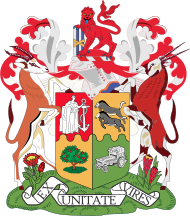
Coat of arms of the Union of South Africa, 1910. All Europeans cordially invited.
And just as the other three colonies found the Cape non-racial franchise unacceptable, so the Cape representatives to the national assembly found any suggestion that they should abandon it equally unacceptable. The negotiations had reached an impasse. It looked as though the grand project of union (which the British government had desired since the Confederation of Canada in 1867) was going to founder yet again.
Eventually a compromise was agreed. Union would go ahead. The Cape could keep its non-racial franchise. The other provinces could keep their all-white franchise, and this could not be altered except by a two-thirds majority of both houses of parliament (the Senate and the House of Assembly) sitting together.
This continued for the next 20 years.
Except that, in the 1920s, white women were given the vote in all four provinces, with no property qualifications, but black woemn were not given the vote in the Cape Province, even if they had the property qualifications. But this was thought to be unfair to white males, so they too had the property qualification abolished.
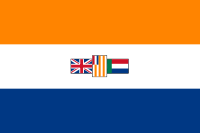
Flag of the Union and First Republic of South Africa, 1927-1994. All Europeans cordially invited.
Then came the great worldwide Depression, and this caused such a crisis that a National goverrnment was formed — all the main parties were represented in the government. This was thought to be such a good thing that the two main parties, the National Party and the South African Party (SAP) decided to unite to form a single party. The result was the United Party, and it was strong enough to command a two-thirds majority in both houses of parliament, and it took the opportunity to remove black voters in the Cape Province from the common electoral roll. Instead they were put in three separate constituencies, where they could elect three white “Natives Representatives”.
Perhaps one of the unforeseen consequences of this was that the South African parliament had its only Communist MP, Sam Kahn, who opposed the first reading of the Suppression of Communism Bill in 1949-50. It was unheard of for anyone to speak at the first reading of a bill, where all that was done was to decide when to have the second reading. The Communist representative ignored all attempts by the Speaker to shut him up, saying that he was speaking about the time for the second reading, and after a long speech outlining all the injustices of the South African political system, he ended with “I therefore propose that this bill be read a second time on the Greek Kalends, which would be the most suitable date for its introduction.”[1]
The United Party split again of the issue of participation in the Second World War, and the result was a “purified National Party” led by Dr Malan, which came to power in 1948, with the United Party in opposition. One of their first acts was to pass the Suppression of Communism Act, which, among other things, removed Sam Khan from parliament.
The NP then proceeded to remove coloured voters in the Cape Province from the common voters roll in the Cape Province. The coloured voters had stayed behind when the blacks were removed in 1936.
But this time the Nats did not have a two-thirds majority. They said they didn’t need one.
White ex-servicement friom the Second World War formed the Torch Commando and marched the streets of the cities in protest. White women wore black sashes to mourn the death of constitutional government. The Torch Commando, composed as it was of pusillanimous males, fizzled out, but women were made of sterner stuff and the Black Sash grew stronger and continued to protest against injustices perpetrated by the National Party government.
In 1960 the Native Representatives were removed from parliament altogether, and this symbolically opened the way for the first Republic of South Africa, to which all Europeans were cordially invited.
This post is one of a series of tales of memories of the bad old days of the apartheid era in South Africa. You may find the full series here: Tales from Dystopia | Khanya
Notes
[1] for those who may be puzzled by Mr Khan’s reference to the Greek Kalends, the Roman calendar had “calends”, but the Greek calendar did not, so the Greek Kalends is a lawyer’s way of saying “never”.


May 30, 2014
The Sixth Lamentation (book review)
 The Sixth Lamentation by William Brodrick
The Sixth Lamentation by William Brodrick
My rating: 3 of 5 stars
I had mixed feelings about this book, which is about a Nazi war criminal who seeks sanctuary in an English monastery, but is eventually brought to trial.
Agnes Embleton, who is dying of motor neurone disease, writes down the story of her part in the French resistance to Nazi occupation, smuggling Jewish children out of France, using a monastery of the same order as that in which the war criminal has sought sanctuary. She writes the story for her granddaughter Lucy, in haste, knowing that she will soon lose the ability to write.
The snippets from reviews quoted in the blurb speak of the “complex” plot, but I was left wondering whether it was complex or just confusing. The behaviour of some of the characters is inexplicable, even when it is explained. It was an enjoyable read, but some aspects were not quite satisfactory. I wasn’t sure whether to give it 3 stars or 4; probably three and a half stars, better than six out of 10, but not really deserving 8 out of 10.
Though Agnes is dying, she is not yet dead, yet all those involved in the war crimes trial, the prosecution and the defence, the witnesses and the judge, believe that she died in Auchwitz. Lucy Embleton, sitting in the court observing the trial, knows but will not say that Agnes is still alive, though dying. It seems that this is something only to be revealed after the trial, but why this should be so is never made clear.
I found Agnes one of the most interesting characters in the book, perhaps because an old friend of mine died from motor neurone disease a few years ago, and I only re-established contact with him when it was very difficult for him to communicate.
Father Anselm, one of the monks at the monastery, is sent to Rome both to report on and find out about the war criminal staying at the monastery, and conducts his own somewhat bumbling investigation, but seems to take everything that people tell him at face value, or else draws the wrong conclusions about what he is told.
So there are lots of good ingredients, but the mixture never quite seems to work. William Brodrick was a monk who later became a lawyer, and so he gets the monastic and the legal bits right. This is his first novel, so perhaps in his second he will get the story-telling bits right as well.






